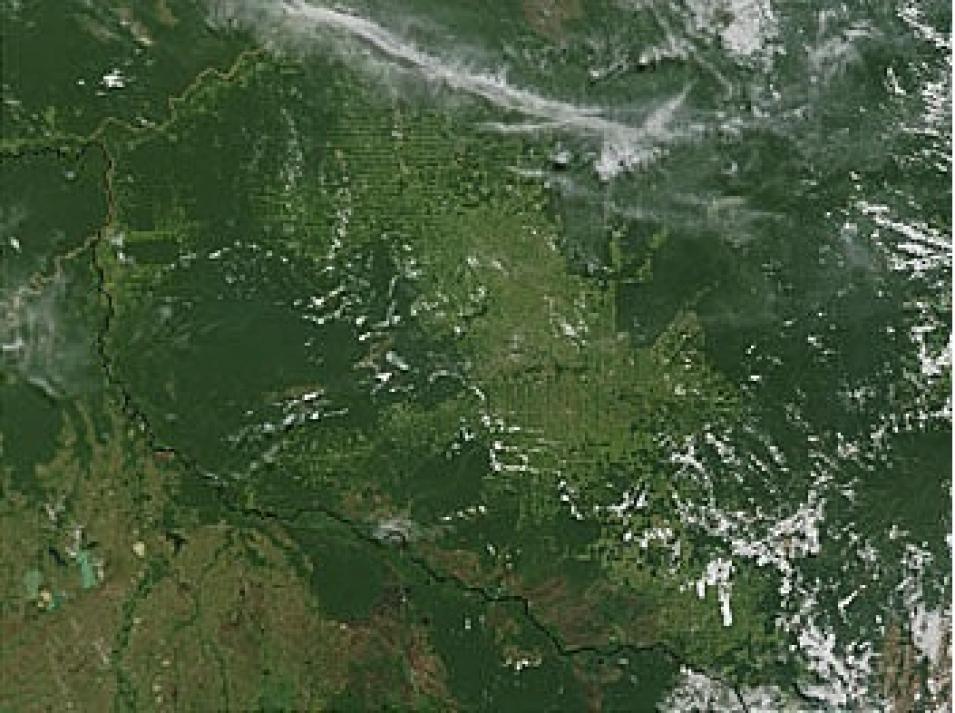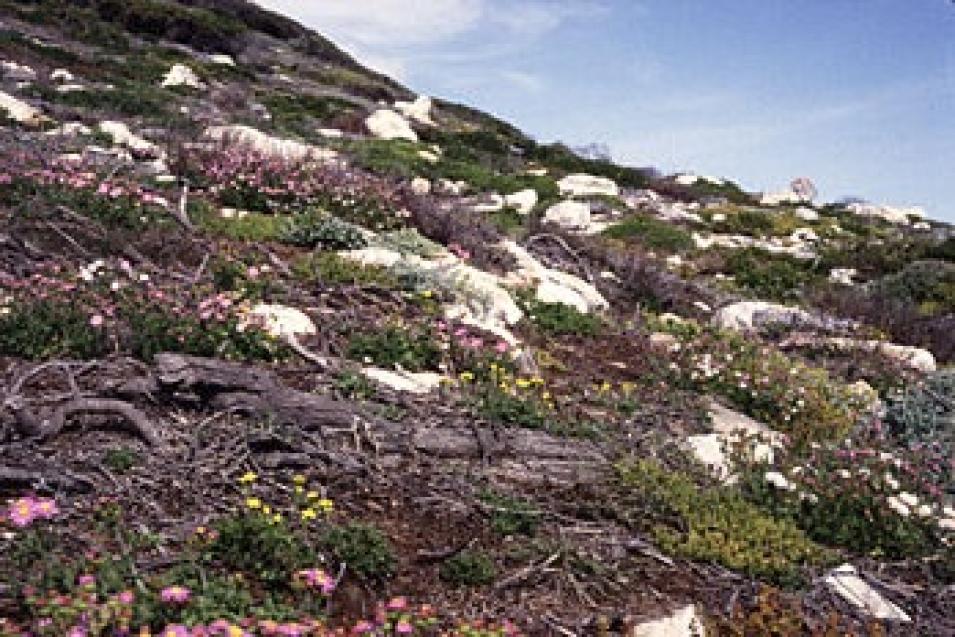MODIS Land products are generated in the Integerized Sinusoidal (ISIN) grid, a projection that allows for uninterrupted global projection, and therefore, an undistorted global view. MODIS land data users, however, have had difficulty reading the data into the unusual ISIN projection using available software. In answer, LP DAAC created a tool that reprojects MODIS data into a software-compatible format.
"We wanted to provide people with a way to read the data files, extract images from the file, reproject and sample information from a specific study region, and have the final output available in a software-friendly format," said John Dwyer, LP DAAC Project Scientist.
"To create the reprojection tool we used, as a baseline, an ISIN version that integrated computer code from LP DAAC's existing mapping transformation software (the Generalized Cartographic Transformation Package, or GCTP). At the same time we incorporated image resampling software code developed at LP DAAC for use in the Landsat 7 land assessment project," Dwyer said.
Tool users may subset the data by region, which effectively reduces the amount of information downloaded, thereby facilitating data transfer. LP DAAC also hoped to facilitate access to MODIS data for users of all skill levels by creating a graphical user interface that eased data access and navigation.
"NASA's Oak Ridge National Laboratory (ORNL) DAAC uses LP DAAC's Reprojection Tool to provide MODIS products to the community of scientists compiling field measurements and performing product validation. Because of the reprojection tool, ORNL DAAC can provide MODIS products in an immediately useful format for science investigators that don't typically work with remote sensing data," said Dick Olson, staff scientist at ORNL.
"The science community has been a great help in developing the reprojection tool. We've created this tool on a shoestring and had our users provide on-the-fly testing because, outside of some initial tests, we don't have the resources for rigorous, pre-release software testing, said Dwyer. "With each incremental release, people have sent us problem reports so that we could verify and rectify any problems that they've encountered."
"Our group was one of the first to use the MODIS Reprojection Tool," Fernandes said. "We found it invaluable. It works quite well and LP DAAC people are always willing to help us with any problems encountered."




